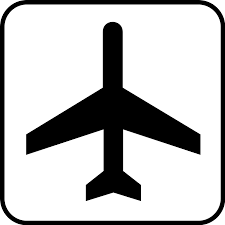Airlines are now expected to earn a $28 billion profit, down from the $35.5 billion that the IATA, which represents nearly 300 airlines or more than 80 percent of global air traffic, forecasted in December 2018. Meanwhile, overall costs are expected to increase by 7.4 percent to $822 billion, greater than the 6.5 percent rise in revenues of $865 billion, according to the trade association. Per-passenger profit also decreased to $6.12.
“This year will be the tenth consecutive year in the black for the airline industry,” Alexandre de Juniac, IATA’s director general and CEO, said in a statement. “But margins are being squeezed by rising costs right across the board–including labor, fuel, and infrastructure. Stiff competition among airlines keeps yields from rising.”
The IATA expects the cost of fuel to be $70 per barrel of oil. this year, compared to $71.6 per barrel in 2018, which is 27.5 percent higher than the price in 2017. Fuel costs make up a quarter of operating costs this year, up slightly from 23.5 percent last year.
The Canadian-based association said it believes the weakening of global trade is likely to continue as the trade dispute between the U.S. and China escalates, which would have a greater impact on the cargo business than passenger traffic.
“Aviation needs borders that are open to people and to trade,” de Juniac said. “Nobody wins from trade wars, protectionist policies or isolationist agendas. But everybody benefits from growing connectivity. A more inclusive globalization must be the way forward.”
The return on invested capital earned from airlines is also forecasted to be lower, at 7.4 percent versus 7.9 percent in 2018, which still exceeds the average cost of capital (estimated at 7.3 percent), according to the IATA. The trade association also noted that there is a “major gap” in profitability between the performance of airlines in North America, Europe and the Asia-Pacific region compared to that of airlines in Africa, Latin America and the Middle East.
North American carriers will earn a $15 billion post-tax profit, making them the strongest financial performers, though net margins are down from the prior year’s levels. In contrast, African airlines are the weakest performers and are forecast to deliver a $0.1 billion loss, though the trade association says industry performance is slowly improving.
“The good news is that airlines have broken the boom-and-bust cycle. A downturn in the trading environment no longer plunges the industry into a deep crisis,” de Juniac said. “Airlines will still create value for investors in 2019 with above cost-of-capital returns, but only just.”
As a whole, the airline industry contributes 65 million jobs and $2.7 billion to the global economy, according to de Juniac, who called aviation “the business of freedom.” The IATA expects global spend on tourism enabled by air transportation to increase by 7.8 percent this year to $909 billion, and forecast that nearly 1,800 new aircraft will be delivered to airlines in 2019, expanding the global fleet to about 30,700 and helping improve fuel efficiency by 1.7 percent.
The SPDR S&P Transportation ETF (XTN) . Year-to-date, XTN has declined -12.99%, versus a 3.30% rise in the benchmark S&P 500 index during the same period.
XTN currently has an ETF Daily News SMART Grade of A (Strong Buy), and is ranked #14 of 33 ETFs in the Industrials Equities ETFs category.
This article is brought to you courtesy of Fox Business.

